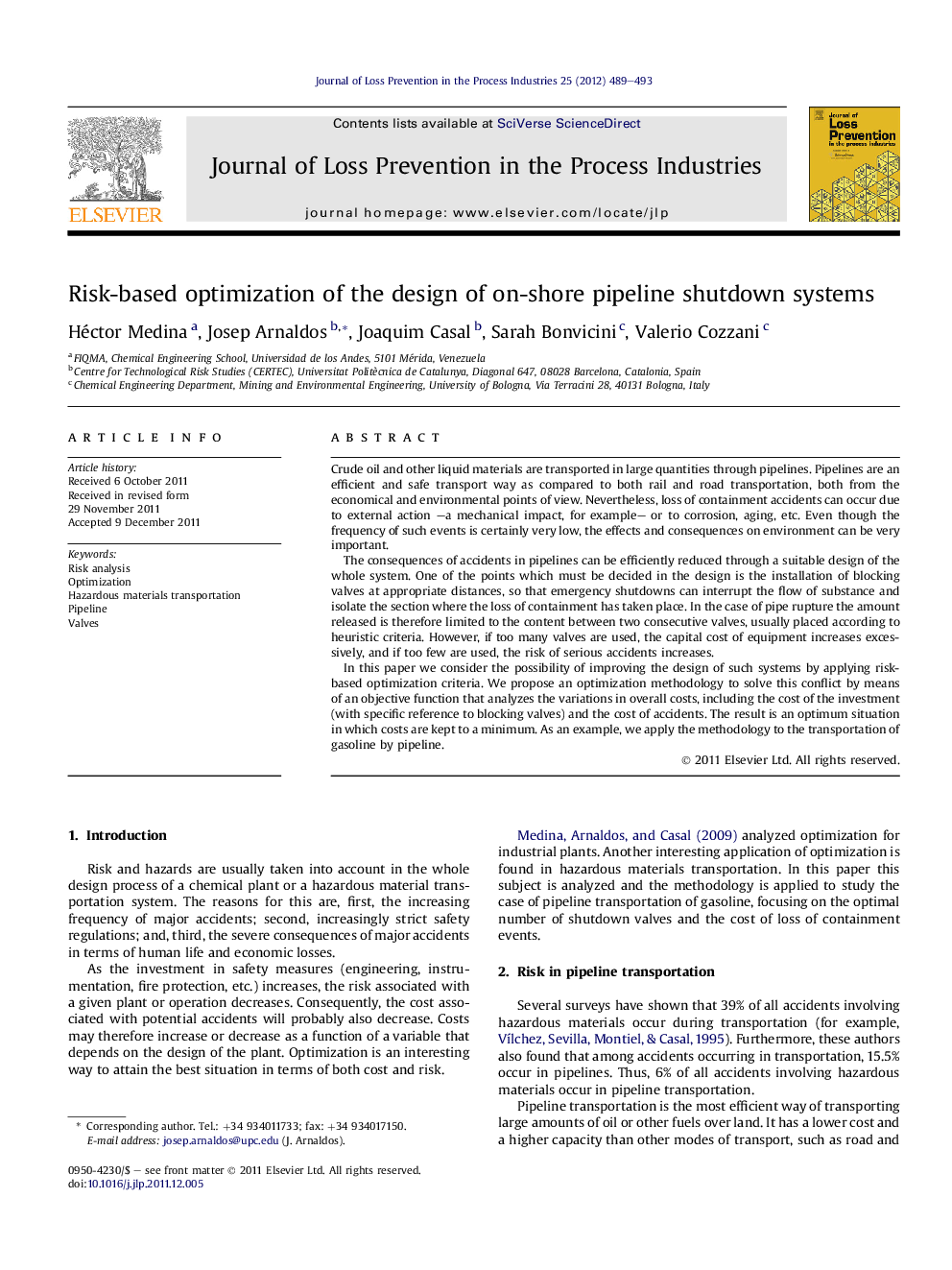| Article ID | Journal | Published Year | Pages | File Type |
|---|---|---|---|---|
| 586139 | Journal of Loss Prevention in the Process Industries | 2012 | 5 Pages |
Crude oil and other liquid materials are transported in large quantities through pipelines. Pipelines are an efficient and safe transport way as compared to both rail and road transportation, both from the economical and environmental points of view. Nevertheless, loss of containment accidents can occur due to external action –a mechanical impact, for example– or to corrosion, aging, etc. Even though the frequency of such events is certainly very low, the effects and consequences on environment can be very important.The consequences of accidents in pipelines can be efficiently reduced through a suitable design of the whole system. One of the points which must be decided in the design is the installation of blocking valves at appropriate distances, so that emergency shutdowns can interrupt the flow of substance and isolate the section where the loss of containment has taken place. In the case of pipe rupture the amount released is therefore limited to the content between two consecutive valves, usually placed according to heuristic criteria. However, if too many valves are used, the capital cost of equipment increases excessively, and if too few are used, the risk of serious accidents increases.In this paper we consider the possibility of improving the design of such systems by applying risk-based optimization criteria. We propose an optimization methodology to solve this conflict by means of an objective function that analyzes the variations in overall costs, including the cost of the investment (with specific reference to blocking valves) and the cost of accidents. The result is an optimum situation in which costs are kept to a minimum. As an example, we apply the methodology to the transportation of gasoline by pipeline.
► Many accidents occur in transportation processes. ► The pipeline shutdown system can be designed by including risk analysis. ► An optimization methodology is proposed. ► The equipment investment and environmental consequences cost are taken into account. ► The methodology is successfully applied to a pipeline transportation case.
